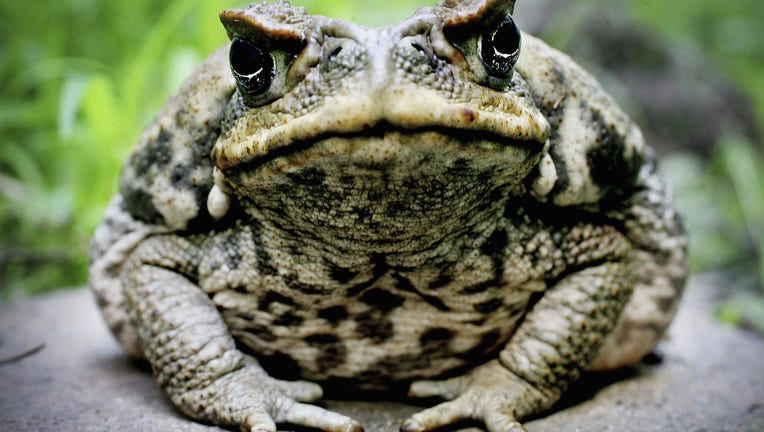Poisonous toads roaming in Florida could be deadly for your pets

SYDNEY, NSW - AUGUST 09: A Cane Toad is exhibited at Taronga Zoo August 9, 2005 in Sydney, Australia. The Cane Toad, which is poisonous, is reportedly being blamed for the deaths of a number of Australia's most dangerous predator, the Salt Water Croc (Ian Waldie/Getty Images)
ORLANDO, Fla. - The Florida Fish and Wildlife Commission (FWC) is warning people about toads so poisonous that they could kill your animal.
Invasive cane toads are found primarily in the central and southern parts of Florida and they are very poisonous.
"If your pet bites or licks one, the consequences could be deadly," FWC said on Facebook.
According to experts, the venom affects the nervous system and could disrupt certain functions. The RSPCA says that an adult cane toad has enough toxin to kill an average-sized dog in 15 minutes.
MORE NEWS: Survey: 40% of Americans would give up their dog over their phone for a month
The Telegraph reports that cane toads are so poisonous that they are responsible for killing a large number of crocodiles in Australia.
The Florida Fish and Wildlife Conservation Commission (FWC) encourages landowners to kill cane toads on their own property whenever possible. They say "they are not protected in Florida except by anti-cruelty law and can be removed from private property year-round with landowner permission."
MORE NEWS: Space Coast prepping for 3 launches in 3 days: Here's how to watch
"Before humanely killing a toad, always make sure that you have correctly identified it as a cane toad," FWC said. "Native toad species are an important part of the ecosystem and are not harmful to people or pets so please be careful not to harm them."
FWC offered these tips on what to do about the invasive species:
HOW TO SPOT THEM
- Reddish-brown to grayish-brown with a light-yellow or beige belly
- Can be uniform in color or have darker markings around the body
- Enlarged glands behind the eyes, which angle downward onto the shoulders
- Glands secrete a potent milky-white toxin (bufotoxin) as defense against predators including domestic pets
- Range in size from 6 to 9 inches in length
| SIGN UP FOR THE FOX 35 NEWSLETTER |
IF YOU COME IN CONTACT WITH A CANE TOAD
- Thoroughly wash your hands
- Always wear latex, rubber or nitrile gloves to safely handle cane toads
SYMPTOMS YOUR PET MAY DISPLAY IF THEY COME IN CONTACT
- Vomiting
- Difficulty breathing
- Foaming at the mouth
- Dilated pupils
- Increased heart rate
- Difficulty walking
- Lethargy
- Seizure
IF YOUR PET BITES OR SWALLOWS A CANE TOAD
- Wash toxins forward out of mouth using a hose for ten minutes being careful not to direct water down the throat.
- Wipe gums/tongue with dish towel to remove toxins.
- Get your pet to the vet!
HOW TO KEEP CANE TOADS OFF YOUR PROPERTY
- Cut your grass regularly and keep it short
- Fill in any holes around structures
- Trim the underside of shrubs
- Keep branches or riprap off the ground
- Clear away brush piles
- Remove clutter

